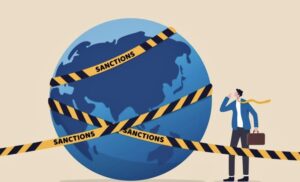di Martina Nunziata-
As a way of conclusion, the following quote from Sandra Day O’Connor – Associate Justice of the Supreme Court of the United States from 1981 to 2006 – seems particularly straightforward: << The courts should not be the places where resolution of disputes begins. They should be the places where the disputes end after alternative methods of resolving disputes have been considered and tried >>.
The idea that has been conveyed in these three chapters is that, in order to achieve the best result from an international construction project, disputes must be reduced to the minimal. How to achieve this aim? The answer can be stated in a single word: prevention.
Members of the business community have come to the final conclusion that an ounce of prevention is worth a pound of cure, thereby taking some precautions from the early beginning of a project implementation can avoid the escalation of disagreements into formal disputes. From this perspective, we have seen that the introduction of standing Dispute Boards among the ADR mechanisms in international construction contracts has partially managed to fulfil this need. In particular, DBs play the role of peacemakers by assisting the parties to slip through the net of potential disputes if possible or, if not, to assist them to a speedy, costeffective and acceptable resolution of disputes, thus avoiding the resort to arbitration or litigation.
The highly qualified panel of independent experts constituting the DB meets on regular site visits together with representatives of the Employer and the Contractor, where it becomes conversant with the project, acquires an up-to-date first-hand knowledge of all the relevant issues which are likely to give rise to formal disputes, and delivers informal advisory opinions with the acquiescence of both parties.
It has been noted that this “job-site level approach” is mainly intended to facilitate open communications with the contracting parties, to build up trust and cooperation, and to preserve long lasting business relationships. When the dispute avoidance mode is on, the DB can turn out to be a valuable ally for the best success of the project. Indeed, << The contractual parties, just like partners in a marriage, must recognize that differences are bound to occur, and when they do, it is better to address them contemporaneously rather than sweep them under the rug>>. An effective dispute prevention mechanism, such as the DB, can assist the parties to face their differences through, just like a “marriage counsellor”.
In line with the frantic search for the most effective legal equivalent to preventive medicine for disputes arising in the execution of international construction projects, a continued effort to promote dialogue and a collaborative work environment is crucial. Traditionally, cooperation between multiple subjects in the construction industry has been the driving force which led to a timely and prompt completion of large complex infrastructures. Accordingly, we have talked about the American initiative to spread the use and the implementation of project partnering as an effective way to move away from litigation. The commitment required to the contracting parties and all the project stakeholders is to align common objectives in view of the project well- being with a trustful and cooperative spirit.
One of the main ambition of this thesis was to provide a root cause analysis of the undeterred distrust towards extra-judicial means for dispute resolution in civil matters, which has an ultimate impact on the implementation of the examined ADR mechanisms in most civil law systems. On that account, we have seen how historical backgrounds and lack of awareness are practical obstacles that hamper any fundamental improvement in the construction field. Having outlined all the issues connected to the modus operandi of traditional litigation, the intention is to broaden the appeal for the acknowledgment of the benefits connected to the use of DBs and project partnering.
All in all, the appeal is mainly addressed to legal practitioners. Indeed, it has been pointed out that << The new generation of lawyers should be in a position to know and sufficiently understand the various forms of decision making, and litigation, to be sure, is only one of them […]
Accordingly, it can be further argued that “the best lawyer” is not necessarily the one who wins most cases that go to trial, but rather the one who is able to provide the best legal advice, that is, the one that better satisfies the clients’ interests >>.
Construction lawyers can therefore play a key role in healing conflicts by recommending dispute avoidance methodologies to their clients, and including appropriate clauses in the underlying construction contract. On that account, it seems particularly useful to recall the question raised by Harvard professor Frank E.A. Sander – one of ADR’S pioneers: << How would you feel about a doctor who suggested surgery without exploring other choices?>>.
In particular, the doctor’s obligation to make sure that patients are informed about all the possible courses of treatment equals to the lawyer’s duty to advise clients to consider all the possible options to settle the dispute before litigate the matter.
The professor’s challenging question dates back to the ‘90s, yet the message he was intended to convey is today more relevant than ever, given that the concept of jurisdictional justice is still deeply rooted in the collective consciousness as the only effective method for maintaining or restoring social order.
What is more, at the time of this writing the theme is even more significant given the highly adverse effects of the COVID-19 epidemic on the business industry worldwide. On that account, it seems interesting to provide a brief analysis on how this virus is both affecting the international construction industry and reshaping alternative dispute resolution in the field.
It goes without saying that the Coronavirus pandemic is having a massive impact on construction projects, causing delay and supply chains disruption, shortage of subcontractors and materials, and the termination of contracts to control expenses. To make matter worse, governments have ordered the suspension of all non-essential businesses, which basically entail most construction projects, and even the closure of some construction sites until the end of the state of emergency period.
Taking everything into consideration, during the pandemic an increase in disputes is very likely to occur and, on the contractual side, much focus is now being given to the wording of standard models. To this end, FIDIC published a Guidance Memorandum containing useful tools to be adopted in several scenarios that are likely to arise as a consequence of COVID-19. In particular, in public health emergencies of international interest like the one at stake, two broad categories of contractual provisions are concerned. The former pertains to ‘force majeure’, which refers to events unforeseeable at the time the contract was entered into and which the contracting parties – reasonably unable to avoid or overcome– may invoke to be exempted from liability for damages due to non-performance or delay.
The second category refers to emergency laws or decrees imposing health and safety measures on construction activities such as social distancing, supply of face masks and sanitizers, and limited working hours for staff and labour, which are likely to be treated as a change in laws142.
The resulting legal consequences are different: while a force majeure event would typically excuse performance of the prevented obligations and entitle a contractor to an extension of time for any resulting delay, financial entitlements are likely to occur only in relation to the unavoidable costs incurred due to the change in law.
A point of major interest in the FIDIC Guideline refers to the dispute avoidance features provided in the FIDIC contracts. In particular, FIDIC stressed the importance of Dispute Boards also in this dramatic scenario. Indeed, DBs can turn to be helpful contractual machines entrusted with the task of delivering useful opinions and advices as to how handling this COVID-19 situation under the specific terms and facts of each individual construction contract. What is more, given that many court hearings have been postponed for the time being, the use of alternative forms of dispute resolution is particularly welcomed in order to reduce delay and accumulation of claims caused by the stalemate of court operations. Thanks both to their inherent flexibility and the lack of strict procedural rules governing their functioning, DBs are particularly inclined to remote working and online project monitoring. What is more, every cloud has a or under SC 1.1.37 of the GOB. These Sub-Clauses provide that a “Force
Majeure” or an “Exceptional Event” (as the case may be) means an event or circumstance which: (i) is beyond a Party’s control; (ii) the Party could not reasonably have provided against before entering into the Contract; (iii) having arisen, such Party could not reasonably have avoided or overcome; and (iv) is not substantially attributable to the other Party. The Contractor shall be entitled subject to Sub-clause 20.2 to claims for payment and/or EOT.142 If it is established that actions taken by the local authorities or government are to be considered as changes in Laws of the Country, then the Contractor may seek remedy under SC 13.7 of the RB1999, YB1999, SB1999 or PB, or under SC 13.6 of the RB2017, YB2017, SB2017, EB and GOB. This is because of the Contractor’s obligation to comply with applicable Laws as set out under SC 1.13 of the RB, YB, SB1999, EB or PB, under SC 1.14 of the GOB, or under SC 1.12 of the SB2017. silver lining and the COVID-19 emergency may turn out to be a blessing in disguise for the construction sector not only as it will prove the usefulness of DBs, but also as it will help to build resilience by strengthening project governance and by providing a new digital enabled environment.
All things considered, preventive methodologies (such as partnering or DBs) can become effective tools for the transformation and the evolution of civil justice towards the management of litigation reduction procedures, thus allowing the Courts to focus on particularly complex issues which require innovative solutions and cannot be successfully dealt with in other alternative ways.
At its heart, openness towards these innovative extra-judicial means is about meeting the needs of a dynamic and evolving business community; it is about grasping the economic and social transformations which affect the construction industry with a view of providing the best legal protection to the multiple interests involved.
![]()






